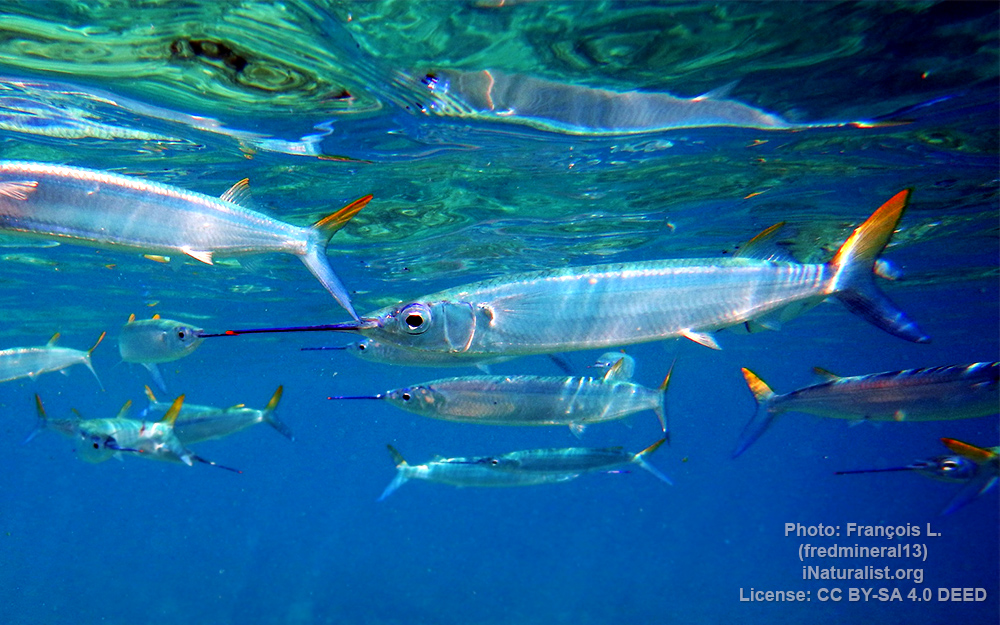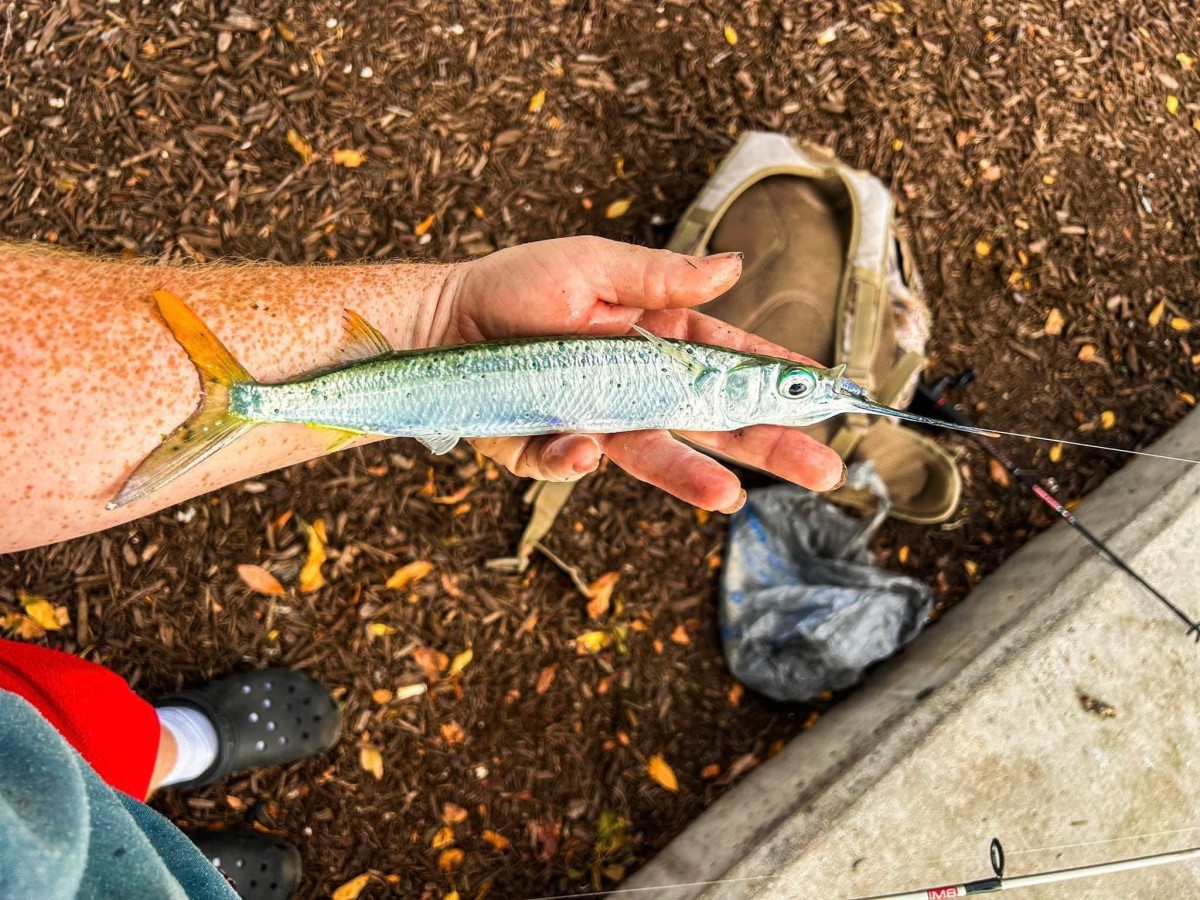Ballyhoo halfbeak
(Hemiramphus brasiliensis)

Image source: François L. | inaturalist.org
Classification
General data
The ballyhoo halfbeak or ballyhoo (Hemiramphus brasiliensis) is a fish of the halfbeak family (Hemiramphidae). It is similar to the Balao halfbeak (H. balao) in most features. Ballyhoo are frequently used as cut bait and for trolling purposes by saltwater sportsmen. The fish is reported to have caused ciguatera poisoning in humans.
Also known as balahu, redtailed balao, and yellowtail ballyhoo, ballyhoo can be seen above the waters skimming the surface to escape from their predators. The appearance is similar to skipping stones on the water.
The body shows typical halfbeak shape with an elongated lower jaw and cylindrical elongated body. They have no spines on fins, but do have 13–14 rays of their dorsal fins and 12–13 rays on their anal fins.
The longest recorded Jumping halfbeak was 55 cm long, but most do not exceed 35 cm.
There is no ridge between nostril and eye. It feeds mainly on sea grasses and small fish.
Ballyhoo is distributed in tropical-warm temperate latitudes on both sides of the Atlantic.
Western Atlantic: Massachusetts, USA and northern Gulf of Mexico to Brazil, including the Caribbean Sea; absent in Bermuda. In Florida, USA, they inhabit shallow bank areas or grassflats associated with coral reefs.
Eastern Atlantic: Cape Verde and Dakar, Senegal to Luanda, Angola.












